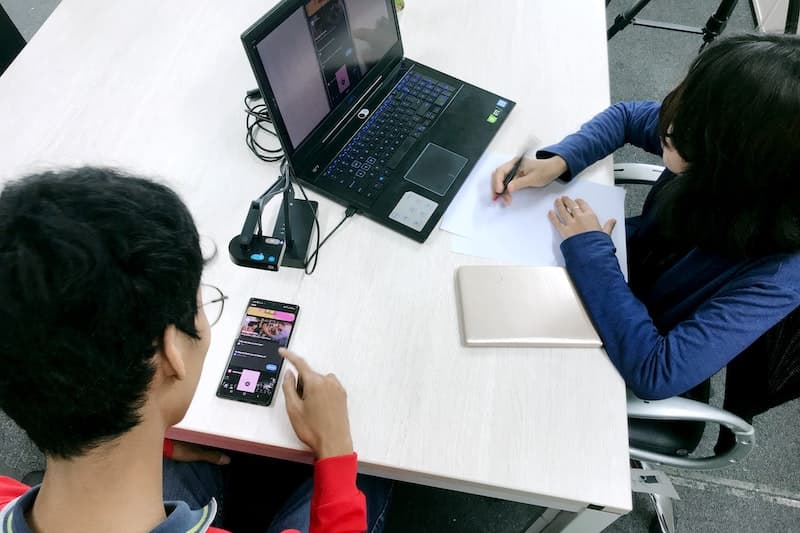As I have previously outlined, I have chosen usability testing as the most appropriate research method for investigating product configurators’ usability and user experience compared to Banner Maker. I will briefly outline the steps I will take in devising a plan for my usability testing.
Defining the research question
The first step in my research plan is to define the research question: “How do competitors’ product configurators compare to Banner Maker in terms of usability and user experience?”
This question will guide my research and help me focus on specific aspects of usability and user experience relevant to my investigation.
Determining the Research Objectives
The second step is determining the research objectives (Loranger, 2016). My research objectives for this study are to:
- Identify specific usability issues with Banner Maker
- Compare the usability and user experience of Banner Maker to that of its competitors
- Determine any areas where Banner Maker could improve its usability and user experience
Research Participants
The third step is to identify the research participants. For this study, I will recruit participants identified as the target market (Moran, 2019) for PVC banners.
There are a few research methods that I could use, such as posting advertisements, recruiting stakeholders or using a research recruitment agency (UK Government, 2020). I prefer to lean on the expertise of recruitment agencies to ensure I get the correct type of users for my study.
Setting the scene
The fourth step is to determine the research participants’ tasks. This would involve me creating a list of tasks that a user might perform with a Banner Maker in a real-world scenario (Moran, 2019), such as selecting a pre-determined material, customising the banner size and uploading artwork. These tasks will guide the research participants as they use each configurator. This step allows me to observe and record their actions to identify usability issues or problems.
Setting the scene
The fifth step is to design the research environment. I will use remote usability software (e.g. Lookback) for this study to conduct the usability testing. Remote usability software enables a larger pool of participants from a wide range of locations and reduces the costs associated with hiring a user testing lab.
Practice makes perfect!
Before proceeding with the usability testing, it is essential to do multiple internal test runs of the study script (Loranger, 2016) to ensure everything will run smoothly on the day. A test run can help identify issues that may arise during the usability testing and allow for adjustments before the study is conducted with the group of participants.
Considering Ethical Implications
I also need to consider the ethical implications of conducting usability testing. This includes obtaining informed consent from participants, ensuring their privacy and confidentiality (Ideo, 2015), and providing debriefing information after completing the study.
Analysing and reporting
The final step is to analyse and report the data. Once the usability testing has been completed, I will analyse the data collected using both statistical analyses for quantitative data and content analysis for qualitative data. To create a valuable report, I must include qualitative data, such as participants’ observations (Hotjar, 2022) and qualitative metrics, such as time on task (Moran, 2019).
Before using these insights to inform changes to Banner Maker, it may be worth conducting additional methods to identify patterns (Grozny, 2020) and triangulate insights.
To summarise, usability testing is an effective research method for investigating product configurators’ usability and user experience. By following the steps outlined in my research plan, I will be able to gather valuable insights into the performance of Banner Maker and compare it to its competitors.
References:
Grozny, M. (2020) 10 pros and cons of user testing for UX/UI designers_. Medium. [Online] https://uxdesign.cc/10-pros-and-cons-of-user-testing-for-ux-ui-designers-571e56836778.
Hotjar (2022) How to Analyse and Evaluate Usability Tests_. Hotjar. [Online] https://www.hotjar.com/usability-testing/evaluation-analysis/.
Ideo (2015) The Little Book of Design Research Ethics_. ideo.com. [Online] https://f.hubspotusercontent30.net/hubfs/6474038/IDEO_The_Little_Book_of_Design_Research_Ethics.pdf.
Moran, K. (2019) Usability Testing 101_. Nielsen Norman Group. [Online] https://www.nngroup.com/articles/usability-testing-101/.
UK Government (2020) Finding participants for user research_. GOV.UK. [Online] https://www.gov.uk/service-manual/user-research/find-user-research-participants.

